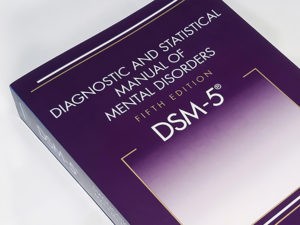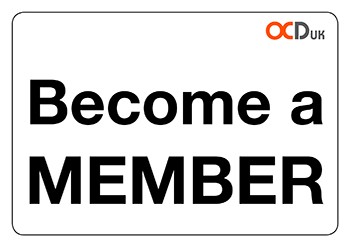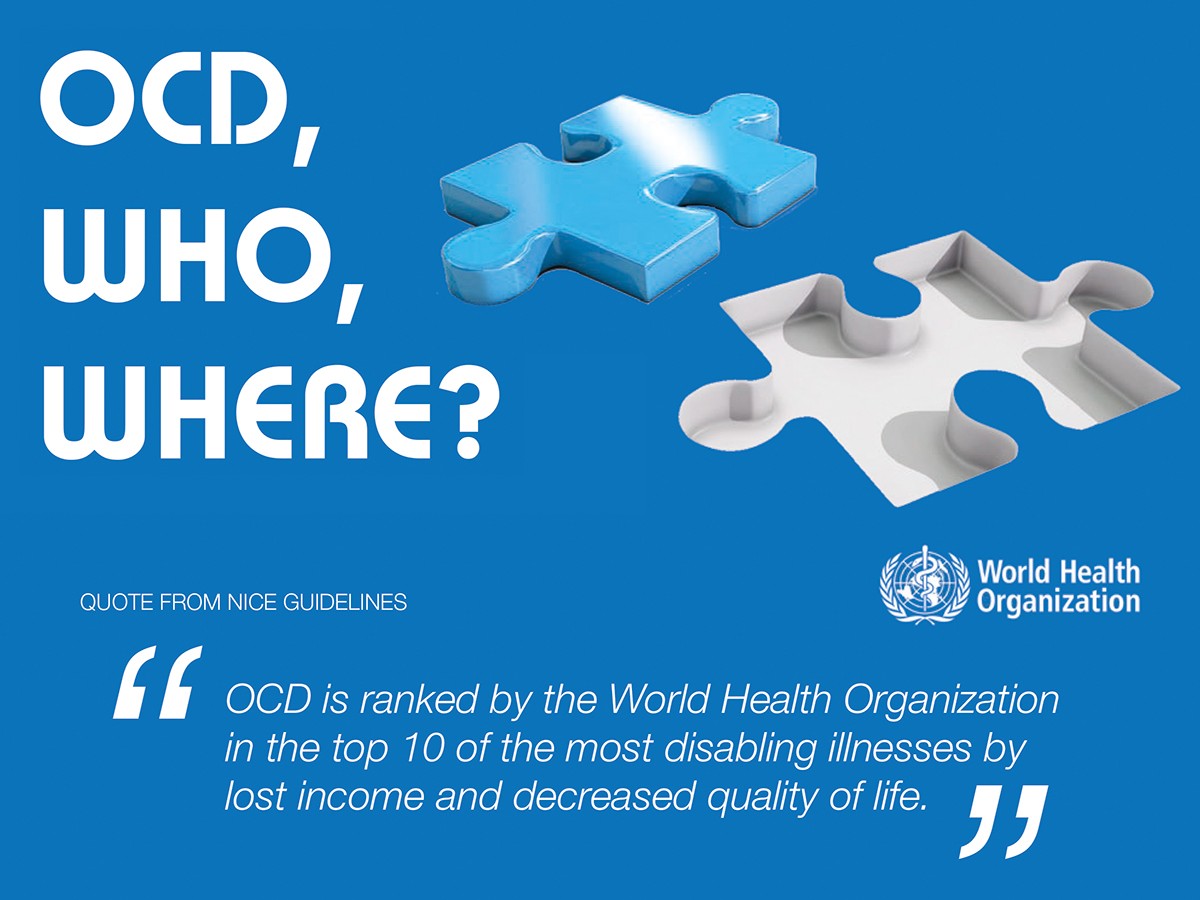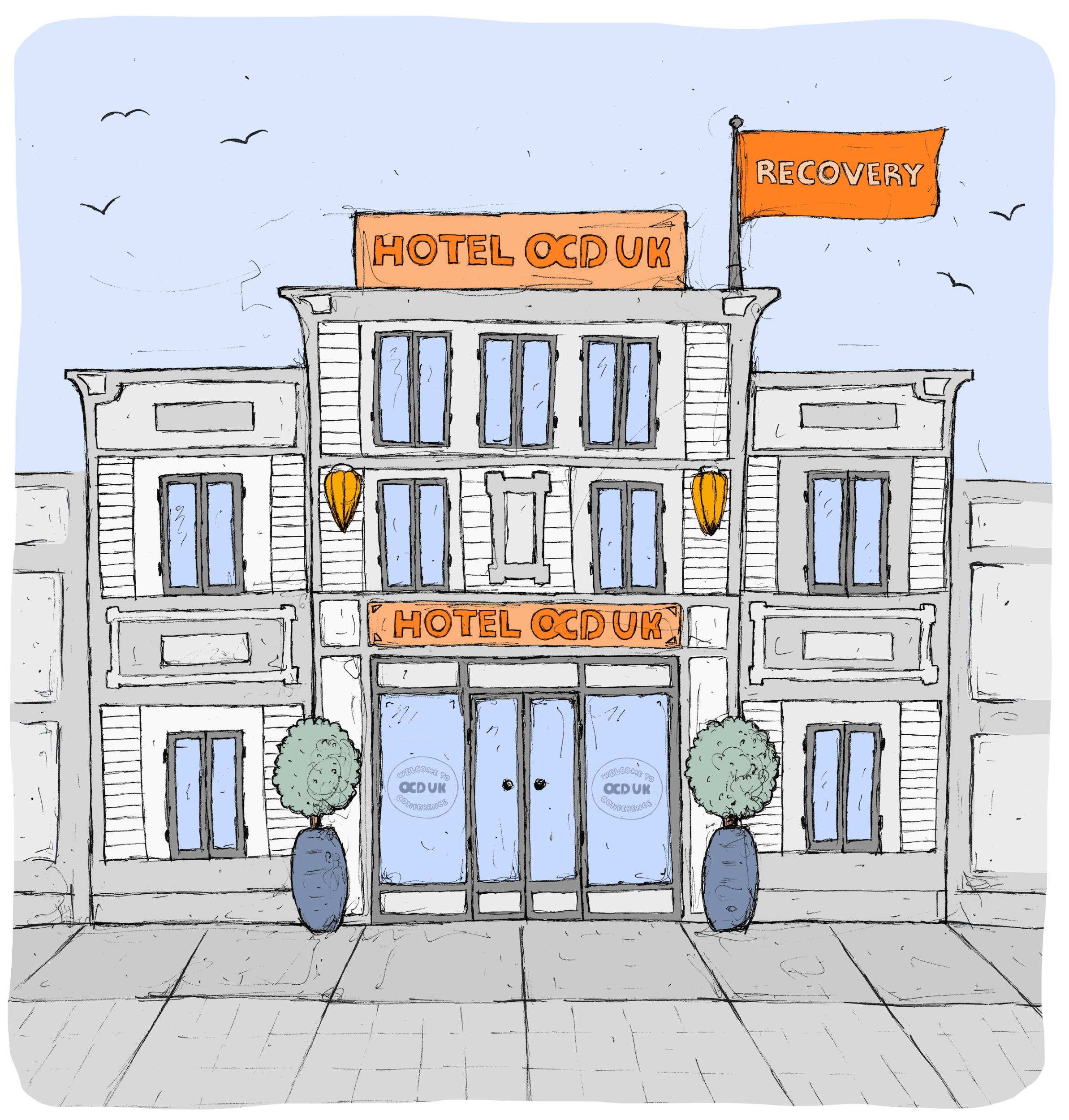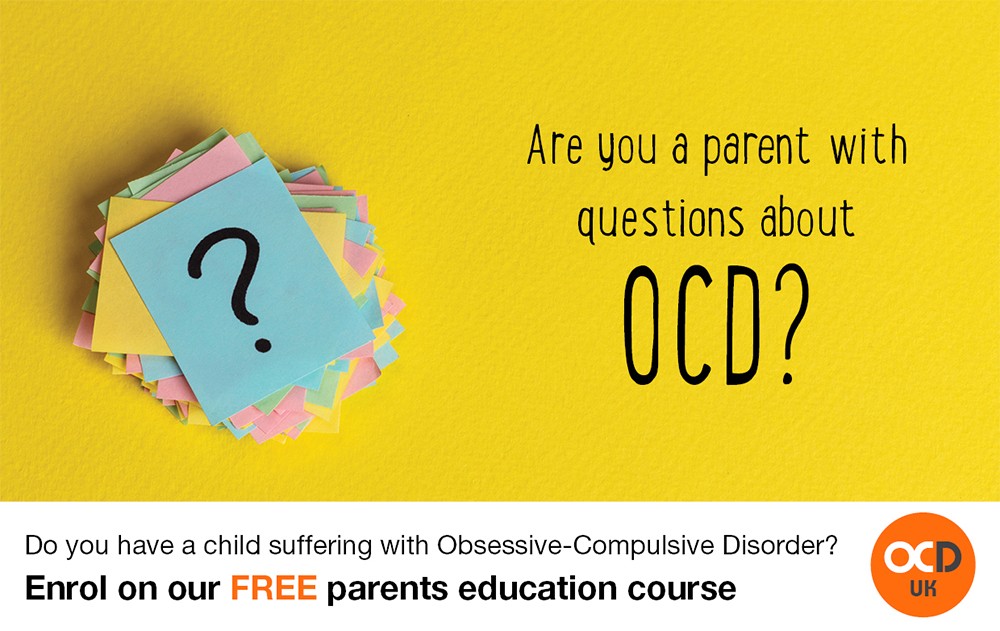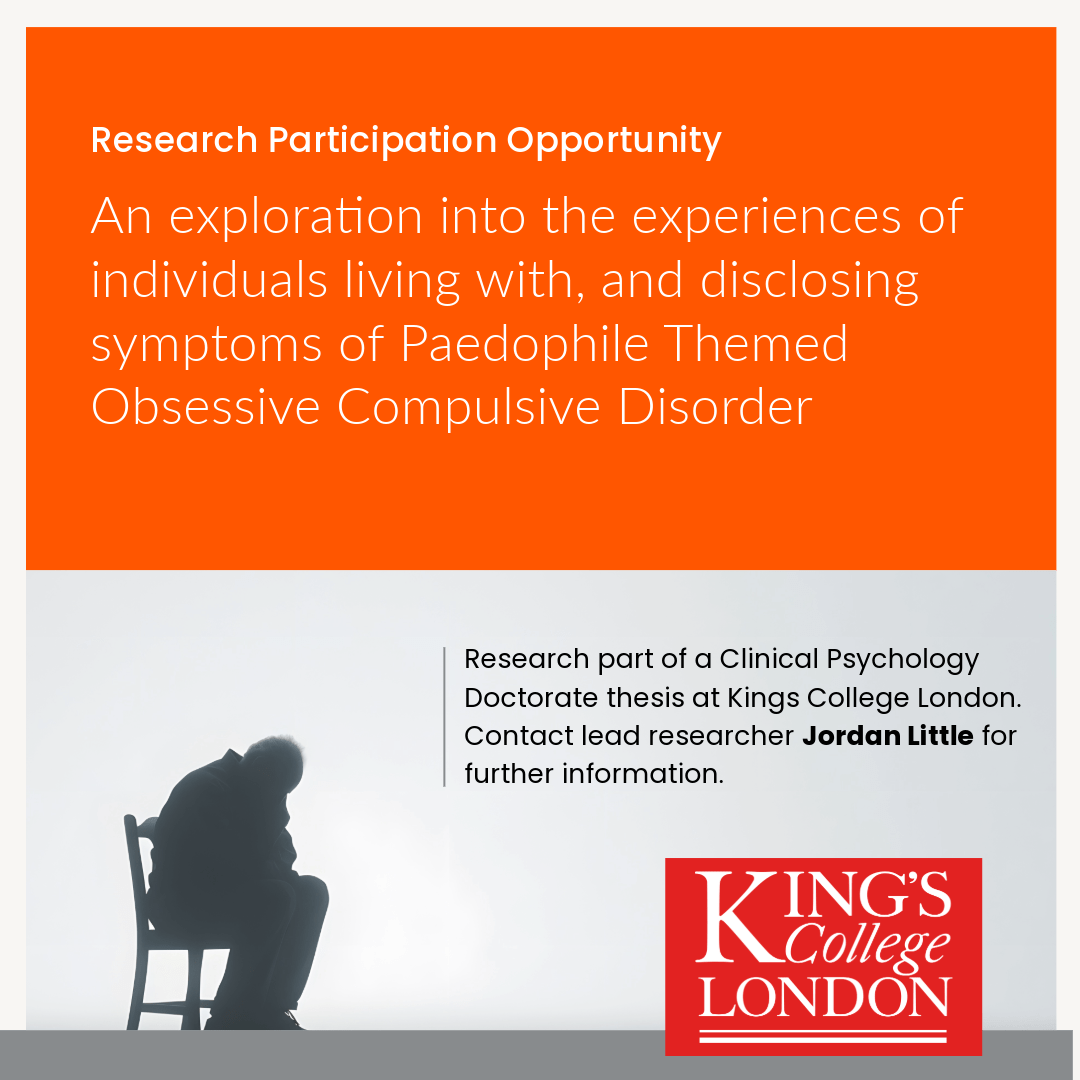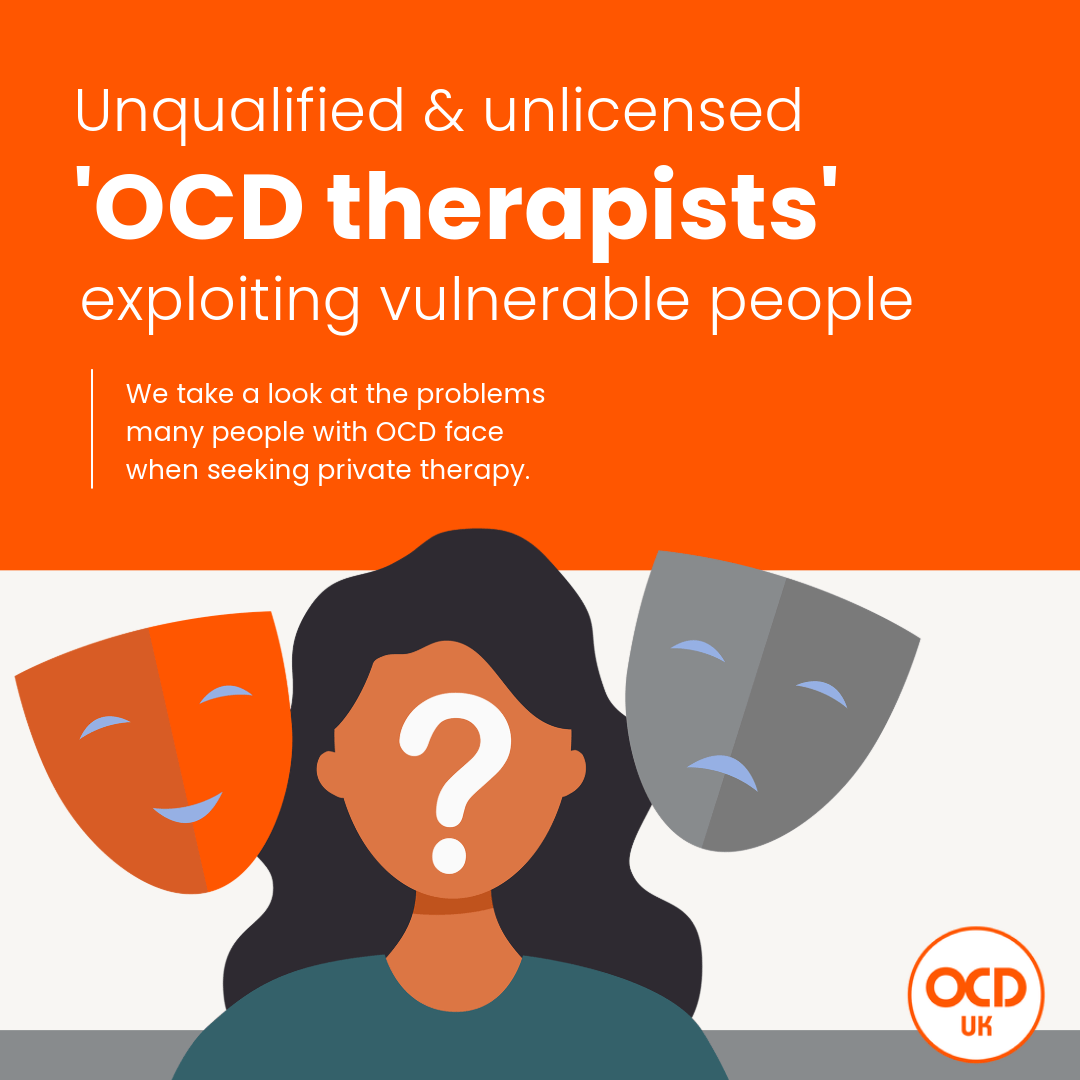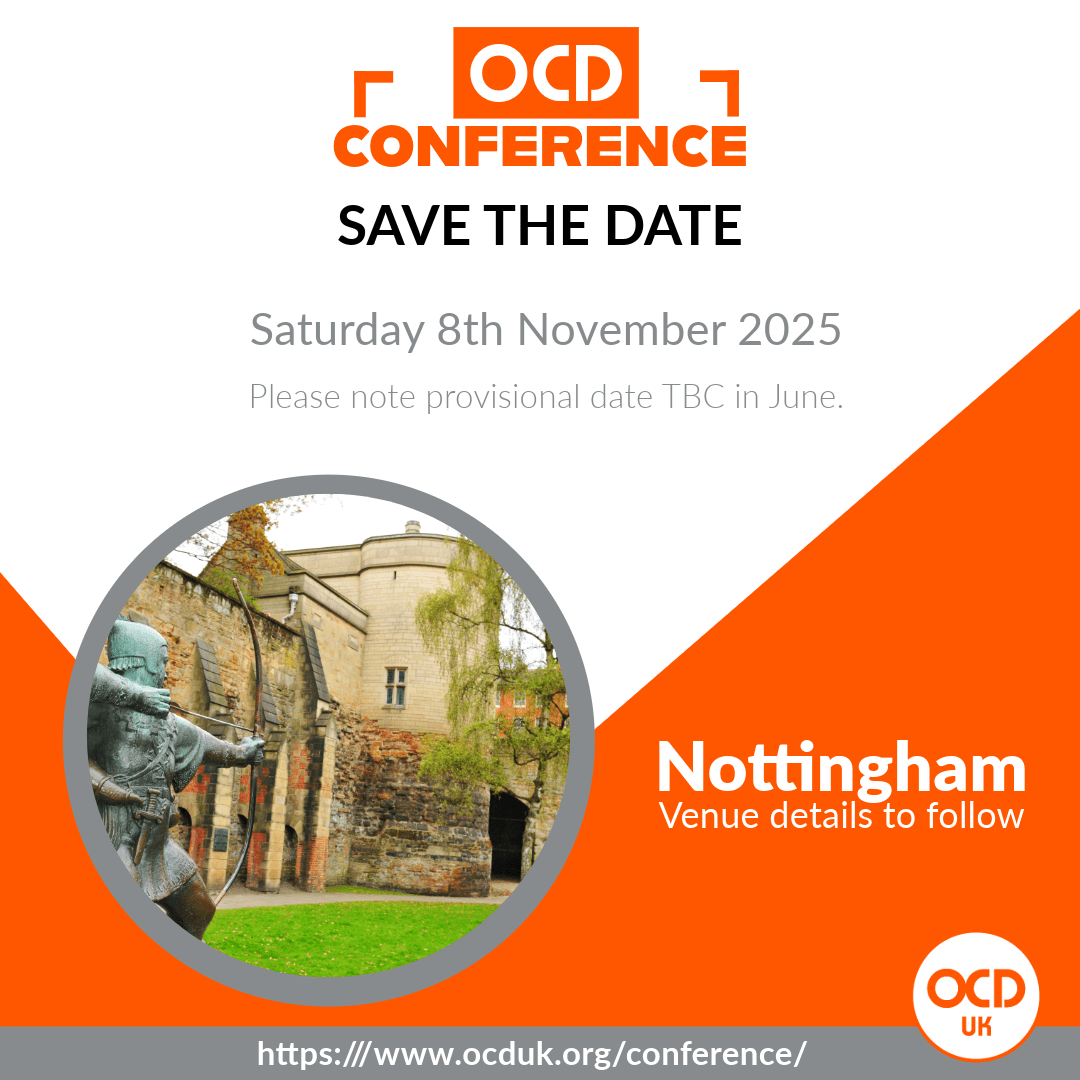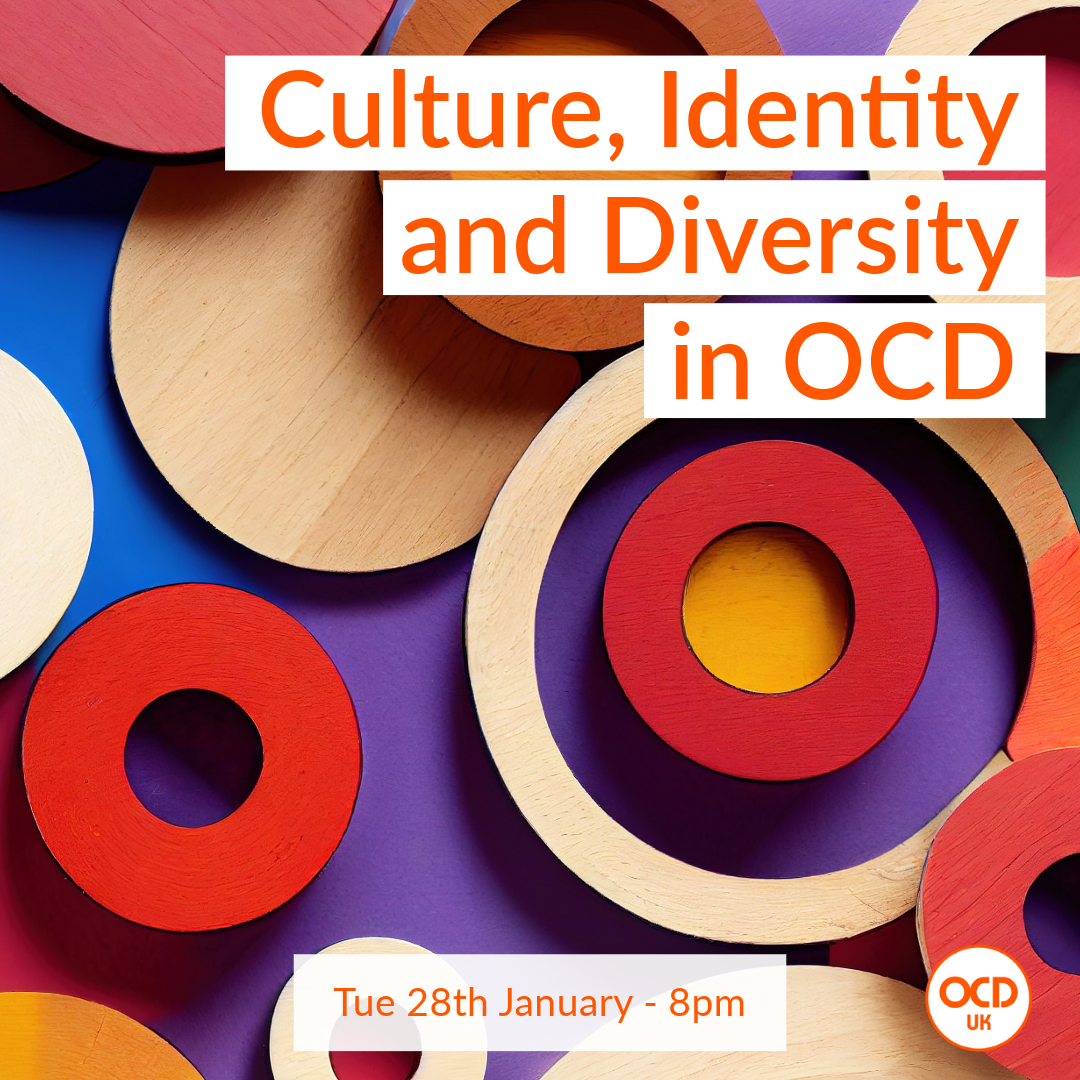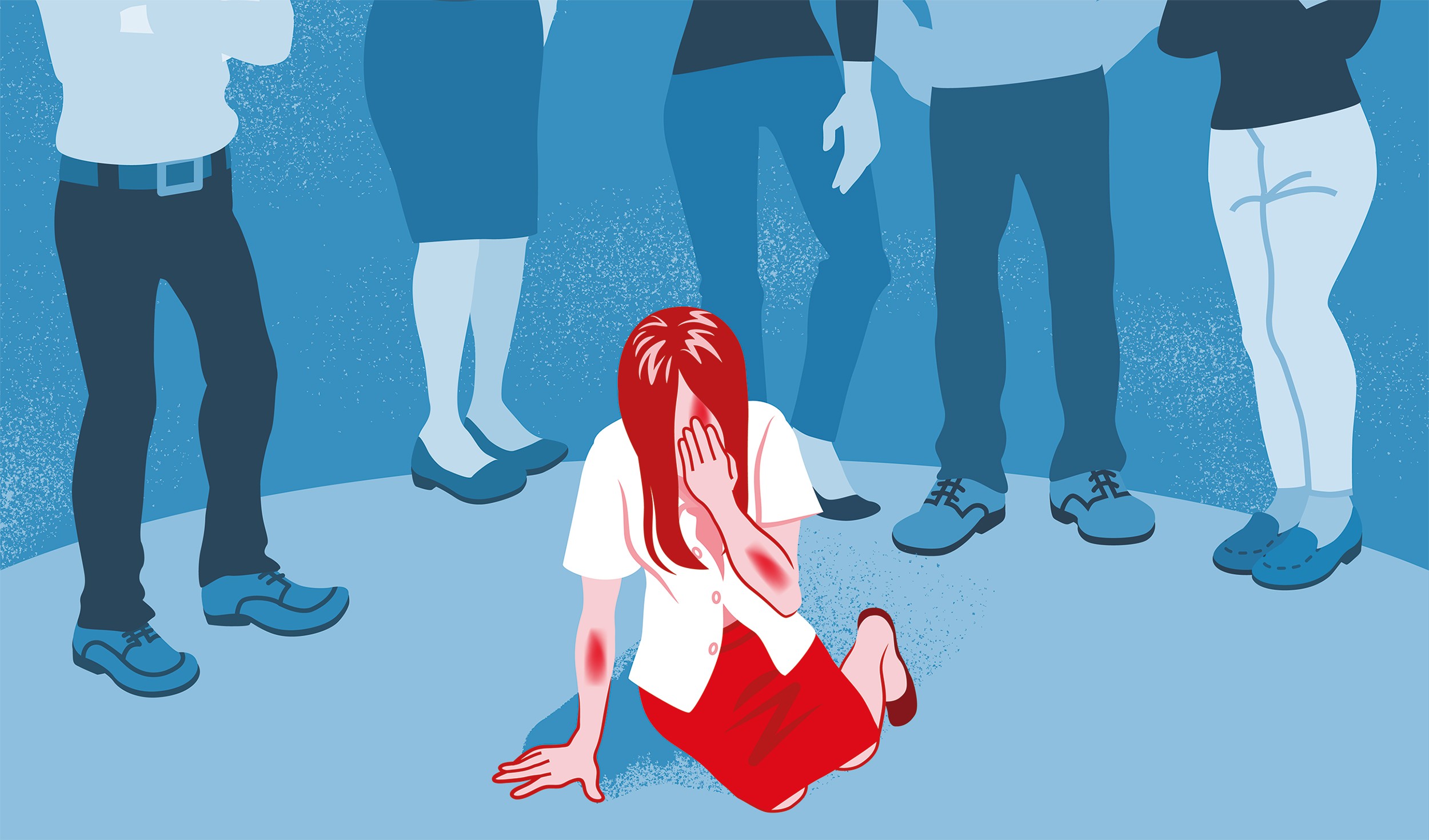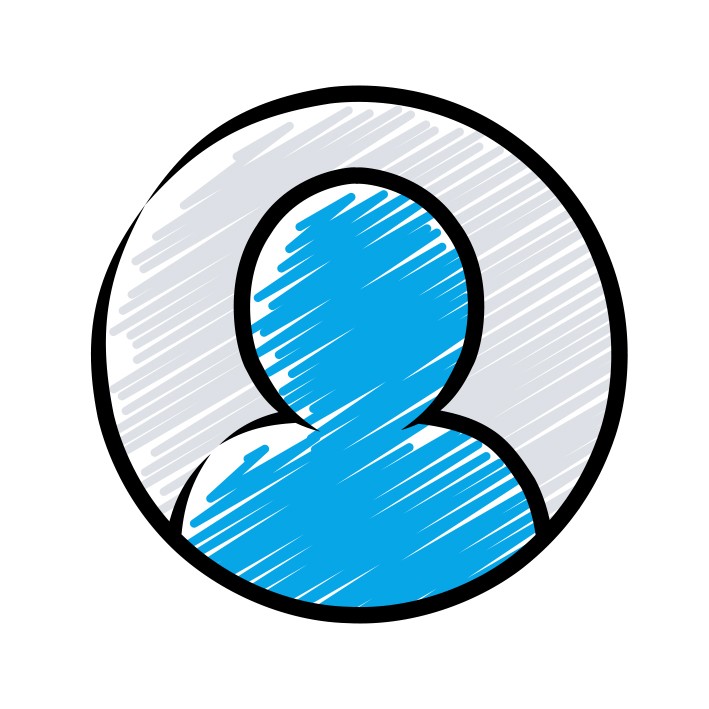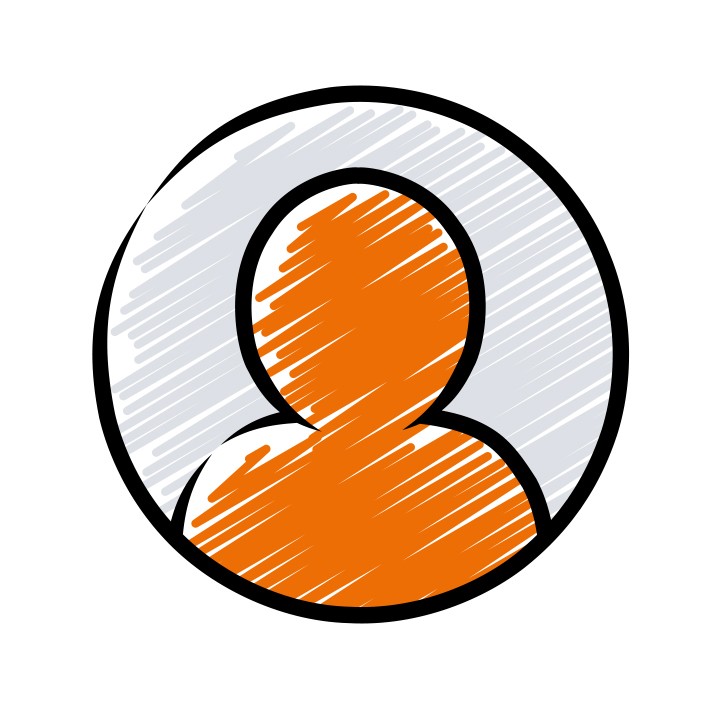ICD-11 (Draft)
The ICD is currently under revision and the release date for the 11th Revision of the International Classification of Diseases (ICD-11) is planned for publication later in 2018. The current listings are the present draft, however please note the ICD-11 listings are still draft and subject to change before publication.
At present the draft of ICD-11 lists BDD under the category of Obsessive-compulsive or related disorders alongside other anxiety disorders, all of which sits inside the Mental, behavioural or neurodevelopmental disorders category.
The is how each of those top two tier categories are listed:
Chapter 6
Mental, behavioural or neurodevelopmental disorders
Chapter V
Mental and behavioural disorders (F00-F99)
Description: Mental, behavioural and neurodevelopmental disorders are syndromes characterized by clinically significant disturbance in an individual’s cognition, emotional regulation, or behaviour that reflects a dysfunction in the psychological, biological, or developmental processes that underlie mental and behavioural functioning. These disturbances are usually associated with distress or impairment in personal, family, social, educational, occupational, or other important areas of functioning.
- Neurodevelopmental disorders
- Schizophrenia or other primary psychotic disorders
- Catatonia
- Mood disorders
- Anxiety or fear-related disorders
- Obsessive-compulsive or related disorders
- Disorders specifically associated with stress
- Dissociative disorders
- Feeding or eating disorders
- Elimination disorders
- Disorders of bodily distress or bodily experience
- Disorders due to substance use or addictive behaviours
- Impulse control disorders
- Disruptive behaviour or dissocial disorders
- Personality disorders and related traits
- Paraphilic disorders
- Factitious disorders
- Neurocognitive disorders
- Mental or behavioural disorders associated with pregnancy, childbirth and the puerperium
- Psychological or behavioural factors affecting disorders or diseases classified elsewhere
- Secondary mental or behavioural syndromes associated with disorders or diseases classified
So BDD is listed under – Obsessive-compulsive or related disorders (F42), a category which includes:
- 6B20 Obsessive-compulsive disorder
- 6B21 Body dysmorphic disorder
- 6B22 Olfactory reference disorder
- 6B23 Hypochondriasis
- 6B24 Hoarding disorder
- 6B25 Body-focused repetitive behaviour disorders
- Substance-induced obsessive-compulsive or related disorders
- 6E64 Secondary obsessive-compulsive or related syndrome
- 6B2Y Other specified obsessive-compulsive or related disorders
- 6B2Z Obsessive-compulsive or related disorders, unspecified
With regard to the essential features of the draft ICD-11 manual it states the following diagnostic criteria for Body Dysmorphic Disorder (BDD).
(Code: 6B21) Body Dysmorphic Disorder
Body Dysmorphic Disorder is characterized by persistent preoccupation with one or more perceived defects or flaws in appearance that are either unnoticeable or only slightly noticeable to others. Individuals experience excessive self-consciousness, often with ideas of reference (i.e., the conviction that people are taking notice, judging, or talking about the perceived defect or flaw). In response to their preoccupation, individuals engage in repetitive and excessive behaviours that include repeated examination of the appearance or severity of the perceived defect or flaw, excessive attempts to camouflage or alter the perceived defect, or marked avoidance of social situations or triggers that increase distress about the perceived defect or flaw. The symptoms are sufficiently severe to result in significant distress or significant impairment in personal, family, social, educational, occupational or other important areas of functioning.
(Code: 6B21.0) Body Dysmorphic Disorder with fair to good insight
All definitional requirements of body dysmorphic disorder are met. Much of the time, the individual is able to entertain the possibility that his or her disorder-specific beliefs may not be true and is willing to accept an alternative explanation for his or her experience. At circumscribed times (e.g., when highly anxious), the individual may demonstrate no insight.
(Code: 6B20.1) Body Dysmorphic Disorder with poor to absent insight
All definitional requirements of body dysmorphic disorder are met. Most or all of the time, the individual is convinced that the disorder-specific beliefs are true and cannot accept an alternative explanation for their experience. The lack of insight exhibited by the individual does not vary markedly as a function of anxiety level.
DSM-5 Categorisation
In DSM-5, Body Dysmorphic Disorder sits under its own category of
Obsessive-Compulsive and Related Disorders and within that the following subcategories were placed:
- Obsessive Compulsive Disorder (OCD)
- Body Dysmorphic Disorder (BDD)
- Hoarding Disorder
- Trichotillomania
- Excoriation (Skin Picking) Disorder
- Substance/Medication-induced Obsessive-Compulsive and related Disorder
- Obsessive-Compulsive and Related Disorder due to another medical condition
- Other specified Obsessive-Compulsive and Related Disorder
- Unspecified Obsessive-Compulsive and Related Disorder
In terms of the actual diagnostic criteria the DSM-5 lists the following:
Diagnostic Criteria
300 7 (F45.22)
A. Preoccupation with one or more perceived defects or flaws in physical appearance that are not observable or appear slight to others.
B. At some point during the course of the disorder, the individual has performed repetitive behaviors (e.g., mirror checking, excessive grooming, skin picking, reassurance seeking) or mental acts (e.g., comparing his or her appearance with that of others) in response to the appearance concerns.
C. The preoccupation causes clinically significant distress or impairment in social, occupational, or other important areas of functioning.
D. The appearance preoccupation is not better explained by concerns with body fat or weight in an individual whose symptoms meet diagnostic criteria for an eating disorder.
Specify if:
With muscle dysmorphla: The individual is preoccupied with the idea that his or her body build is too small or insufficiently muscular. This specifier is used even if the individual is preoccupied with other body areas, which is often the case.
Specify if:
Indicate degree of insight regarding body dysmorphic disorder beliefs (e.g., “l look ugly” or “I look deformed”).
With good or fair insight: The individual recognizes that the body dysmorphic disorder beliefs are definitely or probably not true or that they may or may not be true.
With poor insight:The individual thinks that the body dysmorphic disorder beliefs are probably true.
With absent insight/delusional beliefs: The individual is completely convinced that the body dysmorphic disorder beliefs are true.
Diagnostic Features
Individuals with body dysmorphic disorder (formerly known as dysmorphophobia) are preoccupied with one or more perceived defects or flaws in their physical appearance, which they believe look ugly, unattractive, abnormal, or deformed (Criterion A). The perceived flaws are not observable or appear only slight to other individuals. Concerns range from looking “unattractive” or “not right” to looking “hideous” or “like a monster.” Preoccupations can focus on one or many body areas, most commonly the skin (e.g., perceived acne, scars, lines, wrinkles, paleness), hair (e.g., “thinning” hair or “excessive” body or facial hair), or nose (e.g., size or shape). However, any body area can be the focus of concern (e.g., eyes, teeth, weight, stomach, breasts, legs, face size or shape, lips, chin, eyebrows, genitals). Some individuals are concerned about perceived asymmetry of body areas. The preoccupations are intrusive, unwanted, time-consuming (occurring, on average, 3—8 hours per day), and usually difficult to resist or control.
Excessive repetitive behaviors or mental acts (e.g., comparing) are performed in response to the preoccupation (Criterion B). The individual feels driven to perform these behaviors, which are not pleasurable and may increase anxiety and dysphoria. They are typically time-consuming and difficult to resist or control. Common behaviors are comparing one’s appearance with that of other individuals; repeatedly checking perceived defects in mirrors or other reflecting surfaces or examining them directly; excessively grooming (e.g., combing, styling, shaving, plucking, or pulling hair); camouflaging (e.g., repeatedly applying makeup or covering disliked areas with such things as a hat, clothing, makeup, or hair); seeking reassurance about how the perceived flaws look; touching disliked areas to check them; excessively exercising or weight lifting; and seeking cosmetic procedures. Some individuals excessively tan (e.g., to darken “pale” skin or diminish perceived acne), repeatedly change their clothes (e.g., to camouflage perceived defects), or compulsively shop (e.g., for beauty products). Compulsive skin picking intended to improve perceived skin defects is common and can cause skin damage, infections, or ruptured blood vessels. The preoccupation must cause clinically significant distress or impairment in social, occupational, or other important areas of functioning (Criterion C) usually both are present. Body dysmorphic disorder must be differentiated from an eating disorder.
Muscle dysmorphia, a form of body dysmorphic disorder occurring almost exclusively in males, consists of preoccupation with the idea that one’s body is too small or insufficiently lean or muscular. Individuals with this form of the disorder actually have a normal-looking body or are even very muscular. They may also be preoccupied with other body areas, such as skin or hair. A majority (but not all) diet, exercise, and/or lift weights excessively, sometimes causing bodily damage. Some use potentially dangerous anabolic-androgenic steroids and other substances to try to make their body bigger and more muscular. Body dysmorphic disorder by proxy is a form of body dysmorphic disorder in which individuals are preoccupied with defects they perceive in another person’s appearance.
Insight regarding body dysmorphic disorder beliefs can range from good to absent/ delusional (i.e., delusional beliefs consisting of complete conviction that the individual’s view of their appearance is accurate and undistorted). On average, insight is poor; one third or more of individuals currently have delusional body dysmorphic disorder beliefs. Individuals with delusional body dysmorphic disorder tend to have greater morbidity in some areas (e.g., suicidality), but this appears accounted for by their tendency to have more severe body dysmorphic disorder symptoms.
Associated Features Supporting Diagnosis
Many individuals with body dysmorphic disorder have ideas or delusions of reference, believing that other people take special notice of them or mock them because of how they look. Body dysmorphic disorder is associated with high levels of anxiety, social anxiety, social avoidance, depressed mood, neuroticism, and perfectionism as well as low extroversion and low self-esteem. Many individuals are ashamed of their appearance and their excessive focus on how they look, and are reluctant to reveal their concerns to others. A majority of individuals receive cosmetic treatment to try to improve their perceived defects. Dermatological treatment and surgery are most common, but any type (e.g., dental, electrolysis) may be received. Occasionally, individuals may perform surgery on themselves. Body dysmorphic disorder appears to respond poorly to such treatments and sometimes becomes worse. Some individuals take legal action or are violent toward the clinician because they are dissatisfied with the cosmetic outcome.
Body dysmorphic disorder has been associated with executive dysfunction and visual processing abnormalities, with a bias for analyzing and encoding details rather than holistic or configural aspects of visual stimuli. Individuals with this disorder tend to have a bias for negative and threatening interpretations of facial expressions and ambiguous scenarios.
Prevalence
The point prevalence among U.S. adults is 2.4% (2.5% in females and 2.2% in males). Outside the United States (i.e., Germany), current prevalence is approximately 1.7%—1.8%, with a gender distribution similar to that in the United States. The current prevalence is 9%—15% among dermatology patients, 7%—8% among U.S. cosmetic surgery patients, 3%— 16% among international cosmetic surgery patients (most studies), 8% among adult orthodontia patients, and 10% among patients presenting for oral or maxillofacial surgery.
Development and Course
The mean age at disorder onset is 16—17 years, the median age at onset is 15 years, and the most common age at onset is 12—13 years. Two-thirds of individuals have disorder onset before age 18. Subclinical body dysmorphic disorder symptoms begin, on average, at age 12 or 13 years. Subclinical concerns usually evolve gradually to the full disorder, although some individuals experience abrupt onset of body dysmorphic disorder. The disorder appears to usually be chronic, although improvement is likely when evidence-based treatment is received. The disorder’s clinical features appear largely similar in children/ adolescents and adults. Body dysmorphic disorder occurs in the elderly, but little is known about the disorder in this age group. Individuals with disorder onset before age 18 years are more likely to attempt suicide, have more comorbidity, and have gradual (rather than acute) disorder onset than those with adult-onset body dysmorphic disorder.
Risk and Prognostic Factors
Environmental. Body dysmorphic disorder has been associated with high rates of childhood neglect and abuse.
Genetic and physiological. The prevalence of body dysmorphic disorder is elevated in first-degree relatives of individuals with obsessive-compulsive disorder (OCD).
Culture-Related Diagnostic Issues
Body dysmorphic disorder has been reported internationally. It appears that the disorder may have more similarities than differences across races and cultures but that cultural values and preferences may influence symptom content to some degree. Taijin kyofusho, included in the traditional Japanese diagnostic system, has a subtype similar to body dysmorphic disorder: shubo-kyofu (“the phobia of a deformed body”).
Gender-Related Diagnostic Issues
Females and males appear to have more similarities than differences in terms of most clinical features— for example, disliked body areas, types of repetitive behaviors, symptom severity, suicidality, comorbidity, illness course, and receipt of cosmetic procedures for body dysmorphic disorder. However, males are more likely to have genital preoccupations, and females are more likely to a comorbid eating disorder. Muscle dysmorphia occurs almost exclusively in males.
Suicide Risk
Rates of suicidal ideation and suicide attempts are high in both adults and children/adolescents with body dysmorphic disorder. Furthermore, risk for suicide appears high in adolescents. A substantial proportion of individuals attribute suicidal ideation or suicide attempts primarily to their appearance concerns. Individuals with body dysmorphic disorder have many risk factors for completed suicide, such as high rates of suicidal ideation and suicide attempts, demographic characteristics associated with suicide, and high rates of comorbid major depressive disorder.
Functional Consequences of Body Dysmorphic Disorder
Nearly all individuals with body dysmorphic disorder experience impaired psychosocial functioning because of their appearance concerns. Impairment can range from moderate (e.g., avoidance of some social situations) to extreme and incapacitating (e.g., being completely housebound). On average, psychosocial functioning and quality of life are markedly poor. More severe body dysmorphic disorder symptoms are associated with poorer functioning and quality of life. Most individuals experience impairment in their job, academic, or role functioning (e.g., as a parent or caregiver), which is often severe (e.g., performing poorly, missing school or work, not working). About 20% of youths with body dysmorphic disorder report dropping out of school primarily because of their body dysmorphic disorder symptoms. Impairment in social functioning (e.g., social activities, relationships, intimacy), including avoidance, is common. Individuals may be housebound because of their body dysmorphic disorder symptoms, sometimes for years. A high proportion of adults and adolescents have been psychiatrically hospitalized.
Comorbidity
Major depressive disorder is the most common comorbid disorder, with onset usually after that of body dysmorphic disorder. Comorbid social anxiety disorder (social phobia), OCD, and substance-related disorders are also common.
